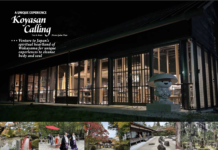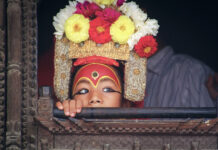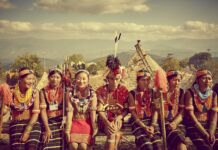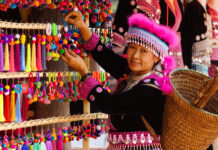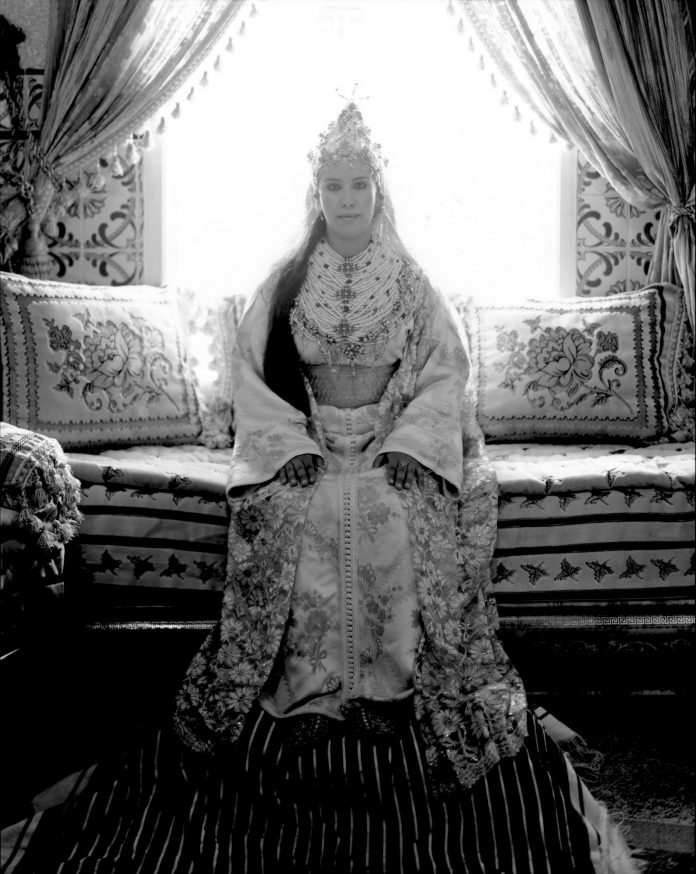
Exploring women’s identities through Diana Lui’s photography
Text Wan Phing Lim
Growing Roots
Diana picked up the film camera during her days at the University of California Los Angeles (UCLA)’s College of Design, where she studied for her Major in Fine Arts. The vintage view camera was made in the early 20th century by the classic Gundlach-Manhattan Optical Company in Rochester, New York. “It’s a huge piece of object and it helps me to root down,” she says. “It is like a pillar to me, because I have to set it up in a person’s home and it helps me to centre myself.”
Identifying herself as a Franco-Belgian photographer of Chinese origin from Malaysia, Diana certainly knows what she’s talking about when it comes to rooting down. Having uprooted from her hometown in Kuala Lumpur at the age of 14, to continue high school in Los Angeles and later migrating to Europe where she is now based, Diana’s transient life between three different continents has informed most of the philosophy behind her photography.
“I’m all about gathering images into the black box of my camera and in that box is the meeting point between me and my subject. That’s the encounter that I’m looking for,” she explains, as we talk over a cheesecake and two coffees at the Alliance Française de Singapour, where her exhibition, TOTEM, was due to open that night.
A total of 27 portraits were on display on the upper floor of the expansive space at the Sarkies Road cultural institution, in collaboration with the Alliance Française de Kuala Lumpur. The opening night was celebrated with much fanfare, with a speech by Claire-Lise Dautry, the executive director of the Alliance Française and Diana herself – all this not without the absence of red wine and some delicious quiche.

Investigating Identity
The word totem, which is defined as “a natural object or animal that is believed by a particular society to have spiritual significance and that is adopted by it as an emblem” is a series of 14 black and white portraits of Malaysian women dressed in their traditional costumes, from Malay to Chinese to Indian, Iban and Kadazan.
“I named it Totem because a totem is an emblem and the identity of a village,” Diana explains. “It can be an animal or a natural object, but it represents the strength of a village. I felt it was a symbolic title for women in Malaysia and their identities, which are so rich and complex.”
Diana explores the ancient ritual of adorning women with symbolic clothing, religious objects, amulets and heirloom jewellery. Her purpose is to fuse the past and the present, the traditional and the modern, and to effectively create new possibilities of defining a woman’s identity.
“It was during my time in UCLA that I started to explore this concept of identity, nudity and how wearing disguises and different layers can make you act differently,” she recalls. “For example, you’ll find that if a girl is wearing a miniskirt, she may talk and act differently around men.”
“I also photographed women nude, in order to explore the question if a woman’s body is really hers. Who are we really on the inside without our clothes and style? Is a woman’s identity imposed by society? Is it tied to the way society sees us and expects of us, which obliges us to dress and act in a certain way and to mould us into a system?”

Layering and Transforming
And so began her fascination with the concept of layering, and it wasn’t until her artists’ residency in Morocco in 2009 with the French Institute that she had the opportunity to further explore this idea.
“Morocco has a wedding tradition where they are required to dress in these layers of clothing for seven days prior to the wedding,” Diana explains.
“This was all arranged for by the negaffa, who acts almost like the wedding matchmaker. I wanted to photograph these women because I wanted to see if their personality could transcend their clothes, because these clothes are so heavy that they are literally trapped in them. I wanted to see if this was also a representation of women as commodities. So I went from exploring nudity to the total opposite, from being naked to being totally clad.”
Her series of photos, called “The Essential Veil”, or Le Voile Essential, was partly inspired by Gaëtan Gatian de Clérambault, a French psychiatrist, painter and photographer who was known for his series of 30,000 images, mostly on women in veiled clothing. From 2009 to 2011, Diana’s photos were exhibited at five galleries throughout Fes and Marrakesh.
Four years later, Diana found herself on another artist’s residency in Tunisia, where the situation was much more different.
“It was post-revolution and the women were more educated,” she says. “They wore mini skirts and the women themselves had been cut off from tradition. So they went from being extremely modern in the 1960s with their miniskirts, to being conservative in the 1980s leading up to the revolution in 2011. The situation was quite chaotic, so I wanted to portray that chaos by photographing these traditional costumes in construction sites.”
The result was “The Hidden Body”, or L’Envers des corps, an exhibition at the Institut du Monde Arabe (Arab World Institute) in Paris from 2013 to 2014.

Homecoming Project
But it was these two stints in Morocco and Tunisia that would pave the way and form the basis for TOTEM. Having spent some 30 years away from Malaysia, her work was spotted by Joe Sidek, director of the Georgetown Festival in Penang, Malaysia.
Diana recalls, “Joe saw my previous works and said to me, ‘Diana, you should do something on your own country.’ And so I started coming back to Malaysia, not just for holidays like I would do previously, but to meet Malaysian women and to take their portraits. TOTEM is indeed a homecoming project for me and it was an opportunity to meet women of my own culture.”
These modern-day portraits of women from all over Malaysia defy the simplistic racial classifications of Malaysian citizens into Malay, Chinese, Indian or Other.
“Malaysia is going through a political crisis at the moment, and this project is as much an ethnographic as it is an anthropological study,” she explains. “Shooting this series, I realised how mixed we all are and that there no longer is a ‘pure race’ in today’s world. I would definitely describe TOTEM as a piece of subversive work.”
Photography as a First Love
Citing her influences as renowned photographers August Sander, Edward S. Curtis and Diane Arbus, Diana’s first brush with photography happened in a dark room at the age of 15. “The summer before high school began, I discovered dark room printing for the first time,” Diana recalls of her teenage years growing up in Los Angeles. “That was where I tasted my first love in photography, and in high school I was elected to be secretary of publicity and also did some photography.”
But it wasn’t until Diana was 19 during a trip back to her grandmother’s hometown in Muar, Johor that reignited her love for film. “In my grandmother’s house I discovered these black and white photographs of our family that she had cut out and placed under the coffee table glass,” she says.
“I used to imagine stories about these people and wondered who they were. They helped me to go back to a past that could only be retrieved through photos. That was how I developed my love for photography,” she says, leading her to minor in Photography at the Art Center College of Design in Pasadena.
“It’s a huge responsibility to be an artist,” she muses, as she tells me about her dream project to achieve self-realisation and to begin that revolution within her. “Photography is my way of questioning the world and the system that we live in. We are the voice of the unconscious.”
For more stories and photos, download a digital copy of Asian Geographic No. 118 Issue 1/2016 here!



